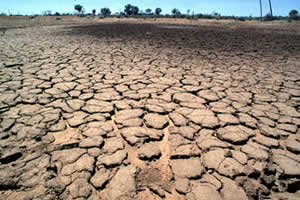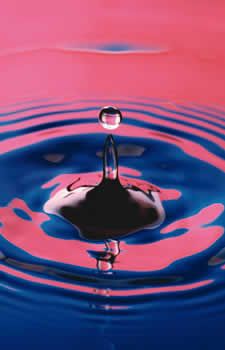
The Pacific Northwest's reputation as a wet place is, well, all wet. While you might look at a map of the green swath that runs from Vancouver B.C. down through Eugene, Ore., and think we are swimming in water year-round, you'd be wrong.
The reason, writes Pulitzer Prize-winning writer William Dietrich in his book Northwest Passage: The Great Columbia River, is that most of the moisture that hits the area never makes it east of the Cascade Mountains. That leaves the entire area east of the mountains a high desert prairie that draws less rain than Los Angeles (a measly five inches per year, compared to 39 in Seattle and as many as 200 in the Pacific Northwest rain forests).
Lewis and Clark called the stark landscape "the Great Columbia Plain," since it drains the nation's second biggest river, fourth largest in North America. The only way to bring water to that arid landscape was to dam the river. "This then was the rally for water," Dietrich says of the dreams to dam the Columbia.

The Depression-era promises initially seemed extravagant: water enough for 100,000 farms; a water highway for commercial river traffic from the Pacific Ocean to Idaho; power for factories to employ more than 200,000 new industrial workers.
And sure enough, those promises were fulfilled. But today the situation has taken an unexpected, dramatic turn for the worse. The Pacific Northwest, despite its reputation, will be facing water shortages right when it's most needed.
Falling water tables, coupled with high summertime water use, has made some water systems across the state vulnerable to the point of running dry, according to state Department of Health officials. At particular risk are shallow wells that depend on rapid, local renewal from rainfall or stream flows.
But the long-term water situation is even more precarious. The snow pack that provides some of the water to power cities, supply drinking water and irrigate farmland is shrinking fast.

Earlier this year, researchers announced new findings that a warming climate the last 50 years has, through early melting, relentlessly reduced the water content of the Pacific Northwest's springtime snowpack. From 1950 through 1992, the amount of water found April 1 in snowpack declined steadily throughout the region, as much as 60 percent in some places at moderate elevations, according to Philip Mote, a research scientist with the Pacific Northwest Climate Impacts Group at the University of Washington.
The summers of the 1990s brought a taste of sharply reduced summer flows. In 1994 farmers in some irrigation districts in the Yakima Valley lost up to 65 percent of their irrigation water-and probably lost hundreds of millions of dollars. In many urban areas, water districts struggled to curb consumers' demand for water. As water levels in reservoirs dropped, the remaining water grew murkier, leading to problems with water quality.
Very dry weather last summer and fall-the SeaTac weather station reported July-November precipitation as the second driest on record-caused record low flows on some rivers and prompted the Washington Department of Ecology's drought coordinator to say as early as August, "At this point, small amounts of rain make very little difference, and large amounts of rain make a difference for a limited time."
"Scarcity has not been seen on this scale before," says UW Marine Affairs Professor Ed Miles. The region's water-resources system just doesn't have the capacity to meet present and anticipated demands, he says. "This region faces severe difficulties even if the climate doesn't change as various models predict it will."
"The whole ecosystem in the Northwest will just unravel and fish are just the tip of the iceberg," says Aquatic and Fishery Sciences Professor Robert Naiman, when asked what could happen in the next 50 years. "Everything will change drastically-drastically."
Go To: Page 1 | Page 2 | Page 3
- Return to June 2003 Table of Contents